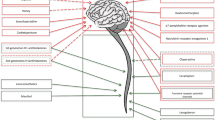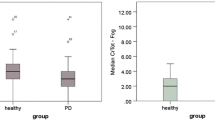Abstract
Cough is among the most common symptoms with which people present for medical attention, but evidence-based treatments remain limited. One issue compromising interpretation of clinical trials of cough preparations is that control formulations often are nearly as effective as those that contain active ingredients. This observation has caused some researchers to propose that one or more nominally inactive ingredients may have some physiological effects. For example, most liquid cough preparations are highly sweetened, and it has been suggested that sweet taste might modulate cough sensitivity. The fact that honey has been used for thousands of years as a cough remedy is consistent with this idea. However, empirical evidence for modulation of cough sensitivity by taste was lacking. Evidence is still sparse, but relevant experiments have now been published: rinsing the mouth with a sweet sucrose solution increased cough thresholds in a single-inhalation capsaicin challenge. Furthermore, rinsing the mouth with a bitter solution did not affect thresholds, an important demonstration of specificity. The underlying mechanisms of cough suppression by sweet taste are still unclear. However, extant data suggest that modulation of cough sensitivity by taste is a promising area for further investigation. Such work may lead to greater understanding of apparent placebo effects in clinical trials and provide empirical support for therapies based on stimulation of taste nerves.


Similar content being viewed by others
References
Coleridge HM, Coleridge JC (1994) Pulmonary reflexes: neural mechanisms of pulmonary defense. Annu Rev Physiol 56:69–91
Fontana GA, Lavorini F (2006) Cough motor mechanisms. Respir Phys Neurobiol 152:266–281
Brooks SM (2011) Perspective on the human cough reflex. Cough. doi:10.1186/1745-9974-7-10
Addington WR, Stephens RE, Gilliland K, Rodriguez M (1999) Assessing the laryngeal cough reflex and the risk of developing pneumonia after stroke. Arch Phys Med Rehabil 80:150–154
Sekizawa K, Ujiie Y, Itabashi S, Sasaki H, Takishima T (1990) Lack of cough reflex in aspiration pneumonia. Lancet 335:1228–1229
McGarvey LPA, Morice AH (2006) Clinical cough and its mechanisms. Respir Physiol Neurobiol 152:363–371
Fendrick AM, Monto AS, Nightengale B, Sarnes M (2003) The economic burden of non-influenza-related viral respiratory tract infection in the United States. Arch Intern Med 163:487–494
Irwin RS (2006) Introduction to the diagnosis and management of cough: ACCP evidence-based clinical practice guidelines. Chest 129(1 Suppl):25S–27S
Morice AH (2002) Epidemiology of cough. Pulm Pharmacol Ther 15:253–259
Yancy WS, McCrory DC, Coeytaux RR, Schmit KM, Kemper AR, Goode A, Hasselblad V, Heidenfelder BL, Sanders GD (2013) Efficacy and tolerability of treatments for chronic cough: a systematic review and meta-analysis. Chest. doi:10.1378/chest.13-0490
Pavesi L, Subburaj S, Porter-Shaw K (2001) Application and validation of a computerized cough acquisition system for objective monitoring of acute cough—a meta-analysis. Chest 120:1121–1128
Schroder K, Fahey T (2002) Systematic review of randomised controlled trials of over the counter cough medicines for acute cough in adults. Br Med J 324:1–6
Eccles R (2002) The powerful placebo in cough studies. Pulm Pharmacol Ther 15:303–308
Eccles R (2006) Mechanisms of the placebo effect of sweet cough syrups. Respir Phys Neurobiol 152:340–348
Plevkova J, Kollarik M, Poliacek I, Brozmanova M, Surdenikova L, Tatar M, Mori N, Canning BJ (2013) The role of trigeminal nasal TRPM8-expressing afferent neurons in the antitussive effects of menthol. J Appl Physiol 115:268–274. doi:10.1152/japplphysiol.0 1144.2012
Buday T, Brozmanova M, Biringerova Z, Gavliakova S, Poliacek I, Calkovsky V, Shetthalli MV, Plevkova J (2012) Modulation of cough response by sensory inputs from the nose—role of trigeminal TRPA1 versus TRPM8 channels. Cough. doi:10.1186/1745-9974-8-11
Keast RS, Breslin PA (2005) Bitterness suppression with zinc sulfate and na-cyclamate: a model of combined peripheral and central neural approaches to flavor modification. Pharm Res 22:1970–1977
Keast RSJ, Breslin PAS (2003) An overview of binary taste–taste interactions. Food Qual Preference 14:111–124
Wise PM, Breslin PAS, Dalton P (2012) Sweet taste and menthol increase cough reflex thresholds. Pulm Pharmacol Ther 25:236–341
Raeessi MA, Aslani J, Raeessi N, Gharaie H, Zarchi AA, Raeessi F (2013) Honey plus coffee versus systemic steroid in the treatment of persistent post-infectious cough: a randomised controlled trial. Prim Care Respir J. doi:10.4104/pcrj.2013.00072
Cohen HA, Rozen J, Kristal H, Laks Y, Berkovitch M, Uziel Y, Kozer E, Pomeranz A, Efrat H (2012) Effect of honey on nocturnal cough and sleep quality: a double-blind, randomized, placebo-controlled study. Pediatrics 130:465–471. doi:10.1542/peds.2011-3075
Paul IM, Beiler J, McMonagle A, Shaffer ML, Duda L, Berlin CM Jr (2007) Effect of honey, dextromethorphan, and no treatment on nocturnal cough and sleep quality for coughing children and their parents. Arch Pediatr Adolesc Med 161:1140–1146
Yao LK, Abdul Razak SL, Ismail N et al (2011) Malaysian gelam honey reduces oxidative damage and modulates antioxidant enzyme activities in young and middle aged rats. J Med Plant Res 5:5618–5625
Halfdanarson TR, Jatoi A (2007) Chocolate as a cough suppressant: rationale and justification for an upcoming clinical trial. Support Cancer Ther 4:119–122
Mokry J, Nosalova G (2011) The influence of the PDE inhibitors on cough reflex in guinea pigs. Bratisl Lek Listy 112:131–135
Dicpinigaitis PV (2010) Inhalation cough challenge. Curr Respir Med Rev 6:142–147
Dicpinigaitis PV (2007) Experimentally induced cough. Pulm Pharmacol Ther 20:319–324
Dicpinigaitis PV, Bhat R, Rhoton WA, Tibb AS, Negassa A (2011) Effect of viral upper respiratory tract infection on the urge-to-cough sensation. Respir Med 105:615–618. doi:10.1016/j.rmed.2010.12.002
Wise PM, Mennella JA, Finkbeiner S (2013) Impaired cough sensitivity in children of smokers. Nicotine Tob Res 15:603–607. doi:10.1093/ntr/nts198
Dicpinigaitis PV (2012) Review: effect of drugs on human cough reflex sensitivity to inhaled capsaicin. Cough. doi:10.1186/1745-9974-8-10
Usmani OS, Belvisi MG, Patel HJ, Crispino N, Birrell MA, Korbonits M, Korbonits D, Barnes PJ (2005) Theobromine inhibits sensory nerve activation and cough. FASEB J 19:231–233
Dicpinigaitis PV, Dobkin JB, Rauf K, Aldrich TK (1998) Inhibition of capsaicin-induced cough by the gamma-aminobutyric acid agonist baclofen. J Clin Pharmacol 38:364–367
Mazzone SB, McGovern AE, Yang SK, Woo A, Phipps S, Ando A, Leech J, Farrell MJ (2013) Sensorimotor circuitry involved in the higher brain control of coughing. Cough. doi:10.1186/1745-9974-9-7
Carpenter GH (2013) The secretion, components, and properties of saliva. Annu Rev Food Sci Technol 4:267–276. doi:10.1146/annurev-food-030212-182700
Georgalas C, Jovancevic L (2012) Gustatory rhinitis. Curr Opin Otolaryngol Head Neck Surg 20:9–14. doi:10.1097/MOO.0b013e32834dfb52
Harrison D, Beggs S, Stevens B (2012) Sucrose for procedural pain management in infants. Pediatrics 130:918–925. doi:10.1542/peds.2011-3848
Mysels DJ, Sullivan MA (2010) The relationship between opioid and sugar intake: review of evidence and clinical applications. J Opioid Manag 6:445–452
Bueno M, Yamada J, Harrison D, Khan S, Ohlsson A, Adams-Webber T, Beyene J, Stevens B (2013) A systematic review and meta-analyses of nonsucrose sweet solutions for pain relief in neonates. Pain Res Manag 18:153–161
Lewkowski MD, Young SN, Ghosh S, Ditto B (2008) Effects of opioid blockade on the modulation of pain and mood by sweet taste and blood pressure in young adults. Pain 135:75–81
Bhattacharjee M, Bhatia R, Mathur R (2007) Gender specificity of sucrose induced analgesia in human adults. Indian J Physiol Pharmacol 51:410–414
Kakeda T, Ishikawa T (2012) Gender differences in pain modulation by a sweet stimulus in adults: a randomized study. Nurs Health Sci 13:34–40. doi:10.1111/j.1442-2018.2010.00573.x
Mennella JA, Pepino MY, Lehmann-Castor SM, Yourshaw LM (2010) Sweet preferences and analgesia during childhood: effects of family history of alcoholism and depression. Addiction 105:666–675. doi:10.1111/j.1360-0443.2009.02865.x
Pepino MY, Mennella JA (2005) Sucrose-induced analgesia is related to sweet preferences in children but not adults. Pain 119:210–218
Barr RG, Pantel MS, Young SN, Wright JH, Hendricks LA, Gravel R (1999) The response of crying newborns to sucrose: Is it a “sweetness” effect? Physiol Behav 66:409–417
Bucher HU, Baumgartner R, Bucher N, Seiler M, Fauchere JC (2000) Artificial sweetener reduces nociceptive reaction in term newborn infants. Early Hum Dev 59:51–60
Ramenghi LA, Evans DJ, Levene MI (1999) “Sucrose analgesia”: Absorptive mechanism or taste perception? Arch Dis Child Fetal Neonatal Ed 80:F146–F147
Pelchat ML (2002) Of human bondage: food craving, obsession, compulsion, and addiction. Physiol Behav 76:347–352
Jain R, Mukherjee K, Singh R (2004) Influence of sweet tasting solutions on opioid withdrawal. Brain Res Bull 64:319–322
Lewkowski MD, Young SN, Ghosh S, Ditto B (2008) Effects of opioid blockade on the modulation of pain and mood by sweet taste and blood pressure in young adults. Pain 135:75–81
Rebouças EC, Segato EN, Kishi R, Freitas RL, Savoldi M, Morato S et al (2005) Effect of the blockade of mu1-opioid and 5HT2A-serotonergic/alpha1-noradrenergic receptors on sweet-substance-induced analgesia. Psychopharmacology 179:349–355
Eddy NB, Friebel H, Hahn KJ, Halbach H (1969) Codeine and its alternates for pain and cough relief. Bull World Health Organ 40:425–454
Norgren R (1983) The gustatory system in mammals. Am J Otolaryngol 4:234–237
Martin J (1988) Neuroanatomy: text and atlas. Elsevier, New York
Davenport PW, Bolser DC, Morris KF (2011) Swallow remodeling of respiratory neural networks. Head Neck 33(Suppl 1):S8–S13. doi:10.1002/hed.21845
Pitts TE, Morris K, Lindsey B, Davenport PW, Poliacek I, Bolser DC (2011) Coordination of cough and swallow in vivo and in silico. Exp Physiol. doi:10.1113/expphysiol.2011.063362/pdf
Lindsey BG, Rybak IA, Smith JC (2012) Computational models and emergent properties of respiratory neural networks. Compr Physiol 2:1619–1670
O’Connor R, Segers LS, Morris KF, Nuding SC, Pitts T, Bolser DC, Davenport PW, Lindsey BG (2012) A joint computational respiratory neural network-biomechanical model for breathing and airway defensive behaviors. Front Physiol 3:264. doi:10.3389/fphys.2012.00264
Engleman EG, Lankton J, Lankton B (1971) Granulated sugar as treatment for hiccups in conscious patients. N Engl J Med 285:1489
Pelletier CA, Dhanaraj GE (2006) The effect of taste and palatability on lingual swallowing pressure. Dysphagia 21:121–128
Yamamura K, Kitagawa J, Kurose M, Sugino S, Takatsuji H, Mostafeezur RM et al (2010) Neural mechanisms of swallowing and effects of taste and other stimuli on swallow initiation. Biol Pharm Bull 33:1786–1790
Hutchings HA, Eccles R (1994) The opioid agonist codeine and antagonist naltrexone do not affect voluntary suppression of capsaicin induced cough in healthy subjects. Eur Respir J 7:715–719
Leech J, Mazzone SB, Farrell MJ (2012) The effect of placebo conditioning on capsaicin-evoked urge to cough. Chest 142:951–957
Conflict of interest
None.
Author information
Authors and Affiliations
Corresponding author
Rights and permissions
About this article
Cite this article
Wise, P.M., Breslin, P.A.S. & Dalton, P. Effect of Taste Sensation on Cough Reflex Sensitivity. Lung 192, 9–13 (2014). https://doi.org/10.1007/s00408-013-9515-z
Received:
Accepted:
Published:
Issue Date:
DOI: https://doi.org/10.1007/s00408-013-9515-z




